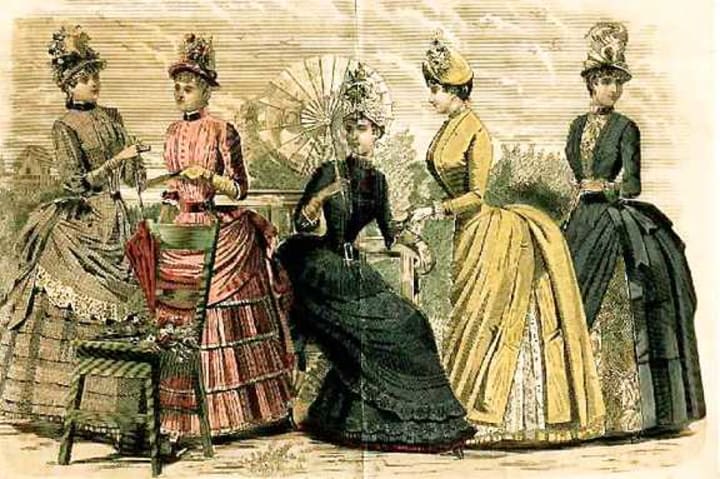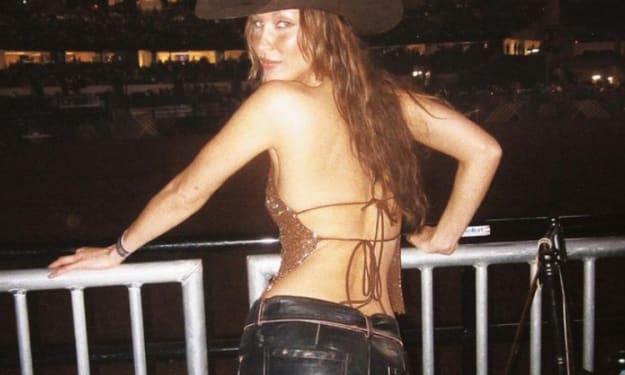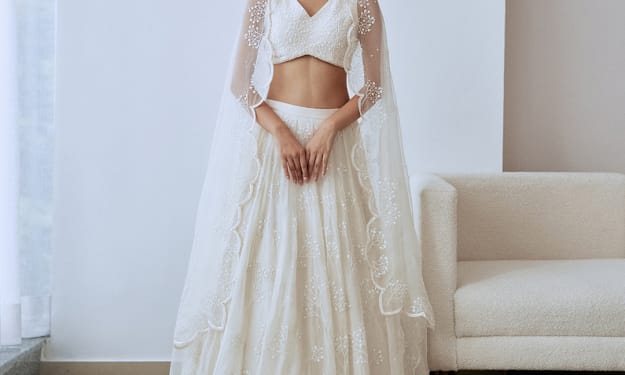Out-Of-Date Styles Are Often The Best Styles.
Something being old does not ever make it less flawless.

“Fashion never goes out of date.” Not changing your style to the current standards means you will never go out on a date. But indeed, you could try your best to be unique, but in this cruel society, you know that at least one person will judge you. But let us pretend like society is extraordinary, and no one got judged for wearing out-of-date clothes. If that was a possibility I would definitely want to wear clothes from the Victorian Era. No one wears those kinds of clothes anymore because there are crop tops, sweat pants, sweatshirts, and more things that are in style.
But if I had the option to make everyone in the world go back to wearing corsets, bonnets, top hats, bustles, and petticoats, I would take the opportunity.

The style from the Victorian Era was probably the most phenomenal. Nowadays, you never really see women in tightly laced corsets with a very fluffy skirt. The only people you see wearing clothes from the Victorian Era are people who like cosplaying or, you know, history teachers.
I know from experience. No, I am not a cosplayer. But I have seen my old world history teacher wear a dress from the Victorian Era. It was not Halloween or any special occasion that I knew of. So I'm fifty percent sure that she was doing it just for the fun of it. It did not look fun. I was not even in her class. I just knew she was a world history teacher. The dress she was wearing was this swamp green color with white lace embroidering the bottom of it. The dress itself was exquisite, just very outdated for nowadays.
First off, let us talk about what the Victorian Era is before we get straight into the fashion. The Victorian Era was a time where Queen Victoria ruled. She ruled from June 20th, 1837 until she ended up passing away on January 22th 1901. Before the Victorian Era, there was the Georgian Era, and after the Victorian Era there was the Edwardian Era.
As you may have already guessed, the Georgian Era was named after none other than the King Georges. All of them, not just one, all of the King Georges. The transition into the Victorian Era fit into three categories. It was characterized by religion, social values, and the arts. Fancy, I know I know. The Edwardian Era was named after none other than King Edward the VII. After Queen Victoria died, the Vitroiana Era was over, and her son ended up taking the throne. He was one very fashionable man. But this isn’t about the Edwardian Era, this is about the Victorian Era.
Queen Victora received the throne at age eighteen after her uncle had passed away. She was almost five feet but not quite there. She ruled during one of Britain's greatest eras and at the time saw them serving as one of the world's biggest empires.

During the Victorian Era, the clothes they wore changed a lot. The victorian Era was from the 1830s - 1890s. I will start with the clothes from the 1830s through the clothes from the 1890s. But before we get started with that, let us talk about women's fashion back then. In the Victorian Era, women worked in private, or if they were born rich or had a rich husband, they did not have to work at all. This was very different from other centuries. Wherein other centuries, women would help their husbands or brothers in a family business.
A woman's dress often expressed their societal status. The upper-class women or the more wealthy women, the ones who did not need to work, wore tightly laced over a bodice or chemisette. They often paired these with a skirt adorned with a lot of embroideries and trims with an overlayer of a petticoat.


Middle-class women wore almost the same things but it was a lot less pronounced or expensiv. The layering of the garments weighs them down since the put so many layers on. Corsets were also very restricted and caused deformities in the rib cage and different damages to vital organs. The clothes were not comfortable whatsoever but they wore these as a symbol of being wealthy or having a lot of money.

All of the little details to the dresses are very important. First off is the neckline. The neckline is the low shoulder neckline worn by women during the Victorian Era. The cut exposed a woman’s shoulder and it sometimes was trimmed over with a three to six-inch deep lace flounce, or the bodice has a neckline draped with several horizontal bands of fabric pleats. It is like off-the-shoulder crop tops nowadays. But only Upper-class and middle-class were allowed to show that much skin. The working-class was unable to do that.

Next is Boning Corsets. Corsets were used in women’s gowns for emphasizing the small waist of the female body. They function as an undergarment that can be adjusted to bind tightly around the waist, hold and train a women’s waistline so they have that hourglass look to them. But like I said earlier corsets can cause damage to vital organs and they are not commonly used in today’s society. “Tightlacing is the practice of wearing a corset that has been tightly laced to shape the body to the desired figure. This practice has been in effect since the early years of corsetry, often deplored by moralists and the subject of urban legends and cautionary tales in many centuries. For the same amount of time, doctors spoke against the practice, citing dramatic risks to the wearer's health. However, many claims were based on the incomplete medical knowledge of the day, as well as incorrect assumptions and beliefs about the female body (-Steele, Valerie (2005). The Corset: A Cultural History. Yale University Press-)”
The next thing is the sleeves. The sleeves were tightly fitted during the Victorian Era. It matched with the women’s tight waist they were going for. They want to make sure everything was tight to look more elegant I assume. All of this pressure tightening up their body, and made it limited for them to move around. But as soon as crinolines started to become trendy in fashion. The sleeves were large and got a lot heavier instead of tighter. Engageants, which were made of either lace or linen were worn under the sleeves. They appeared commonly under bell-shaped sleeves of day dresses.

Last but not least is a Silhouette. Silhouette has changed a lot over time. In the earlier days, wide skirts were supported by fabrics like linen which used horsehair in the weave. Crinolines were used to give skirts a beehive shape, with at least six layers of petticoats worn under the skirt. This all could weigh up to fourteen pounds or more. Silhouette later began to emphasize a slope toward the back of the skirt. Polonaise style was introduced where fullness bunched up at the back of the skirt. Crinolines and cages also started to disappear with it being more dangerous to working-class women. Due to the immense moving around they did.
When Queen Victora became queen in 1837, the ideal shape of a women's torso was slim with wide hips. All of the rages were having a very skinny waist. On top of the corset, there a tight bodice with a low waistline. Along with the bodice was a long fluffy skirt, with many layers of horsehair petticoats.

In the 1840s, collapsed sleeves, low necklines, v-shaped bodices, and a very full and fluffy skirt. At the beginning of the decade, they would have more of their natural waistline and not have the corset squeeze their insides out. But later on in the decade, they started to wear very tight corsets to make the waist more Narrow. Much like the rest of them, they had sleeves that were tight at the top but then expanded near the wrist. Much like most things that women wore from the Victorian Era, this also restricted their movements.


A similar silhouette continued in the 1850s. But some garments did end up changing. The neckline of a day dress dropped even lower into a v-shape. That is why they started to use chemisette to cover their bust area. An evening dress featured a Bertha. A Bertha is an off-the-shoulder kind of look that was often common for upper and middle-class women to wear. In 1856 the fluffy skirts expanded even further, which would more or less create a dome shape.


During the early and middle 1860s, crinolines began decreasing in size at the top, while retaining their amplitude at the bottom. In contrast, the shape of the crinoline became flattered in the front and more voluminous behind, as it moved towards the back since skirts consisted of trains now. Bodices on the other hand ended at the natural waistline, had wide pagoda sleeves, and included high necklines and collars for day dresses; low necklines for evening dresses. However, in 1868, the female silhouette had slimmed down as the crinoline was replaced by the bustle, and the supporting flounce overtook the role of determining the silhouette. Skirt widths diminished even further, while fullness and length remained at the back. In order to emphasize the back, the train was gathered together to form soft folds and draperies.


The trend for broad skirts slowly disappeared during the 1870s, as women started to prefer an even slimmer silhouette. Bodices remained at the natural waistline, necklines varied, while sleeves began under the shoulder line. An overskirt was commonly worn over the bodice and secured into a large bow behind. Over time though, the overskirt shortened into a detached basque, resulting in an elongation of the bodice over the hips. As the bodices grew longer in 1873, the polonaise was thus introduced into the Victorian dress styles. A polonaise is a garment featuring both an overskirt and bodice together. The tournure was also introduced, and along with the polonaise, it created an illusion of an exaggerated rear end.



The early 1880s was a period of stylistic confusion. On one hand, there is the over-ornamented silhouette with contrasting texture and frivolous accessories. On the other hand, the growing popularity of tailoring gave rise to an alternative, severe style. Some credited the change in silhouette to the Victorian dress reform, which consisted of a few movements including the Aesthetic Costume Movement and the Rational Dress Movement in the mid-to-late Victorian Era advocating natural silhouette, lightweight underwear, and rejecting tightlacing. However, these movements did not gain widespread support. Others noted the growth in cycling and tennis as acceptable feminine pursuits that demanded greater ease of movement in women's clothing. Still, others argued that the growing popularity of tailored semi-masculine suits was simply a fashionable style, and indicated neither advanced views nor the need for practical clothes. Nonetheless, the diversification in options and adoption of what was considered menswear at that time coincided with the growing power and social status of women towards the late Victorian period.

By 1890, the crinoline and bustle were fully abandoned, and skirts flared away naturally from the wearer's tiny waist. It evolved into a bell shape and was made to fit tighter around the hip area. Necklines were high, while sleeves of bodices initially peaked at the shoulders, but increased in size during 1894. Although the large sleeves required cushions to secure them in place, they narrowed down towards the end of the decade. Women thus adopted the style of the tailored jacket, which improved their posture and confidence, while reflecting the standards of early female liberation.
If dressing like it is the Victorian age randomly came back in style I would be the first one to purchase myself a corset, bonnet, gloves, a fluffy skirt, and everything needed to back it look like I'm still in the victorian era. To me, that is and will always be one of the best eras in history just because of how extraordinary old fashion and different it is from today’s society. Maybe society won't be judgemental and everyone would wear what they wanted without being judged.
1830s - Goldthorpe, Caroline (1988). From Queen to Empress - Victorian Dress 1837-1877. New York: The Metropolitan Museum of Art. pp. 23–24
1840s - Goldthorpe, Caroline (1988). From Queen to Empress - Victorian Dress 1837-1877. New York: The Metropolitan Museum of Art. p. 32.
1850s - Breward, Christopher (1995). The Culture of Fashion. Manchester University Press. pp. 145–180.
1860s - Goldthorpe, Caroline (1988). From Queen to Empress - Victorian Dress 1837-1877. New York: The Metropolitan Museum of Art. p. 45.
1870s - Goldthorpe, Caroline (1988). From Queen to Empress - Victorian Dress 1837-1877. New York: The Metropolitan Museum of Art. p. 26.
1880s - Goldthorpe, Caroline (1988). From Queen to Empress - Victorian Dress 1837-1877. New York: The Metropolitan Museum of Art. p. 26.
1890s - Breward, Christopher (1995). The Culture of Fashion. Manchester University Press. pp. 145–180.
About the Creator
Ceo Of Dying
Join my Roblox group: https://www.roblox.com/groups/3771416/Dance-Battle-Group#!/store
Subscribe to my YouTube: Ceo Of Dying
Discord Server:
Twitter: Briarisdaddy
Discord: Briar is daddy#1761
Instagram: briarlynnx
Roblox: WsgBriar






Comments
There are no comments for this story
Be the first to respond and start the conversation.